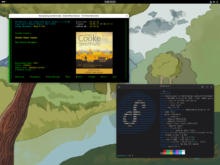It's been almost two years since we moved into our Lincolnshire home. It was intended to be a 'move in and don't spend anything' kind of place, but before four months were out, we'd added solar panels to the main roof. Another three months and we'd fitted a new, insulated roof to the sunroom/conservatory. At the start of the second year, we replaced the floors in the kitchen, sunroom, laundry and boot room. After that came floor replacement in the second study and repainting of every room in the house. So, it ended up not being the 'move-in-ready' kind of place we'd hoped for!
My listening room was next, but it's been a long haul! There was a fireplace which had to be removed and total re-plastering of the wall where it had once been, together with embedding power and speaker cables in the brickwork. I wanted a panel of vertical wooden slats for no particular reason I can remember or think of: I'm told they are currently fashionable, but I wouldn't know and I asked for them two years ago! That panel went in just before Christmas, after which ...crickets! The English workman likes his New Year break and after that their diary was full, so they couldn't squeeze us in to replace the floors until this past week. The week thus began with me moving all my books out for the umpteenth time, all my glass, all my comfy seats... and my computers. Which means I've been offline since Tuesday, kicking my heels: it turns out that a laptop doesn't really replace a desktop PC you're comfortable with 🙂 [...]









